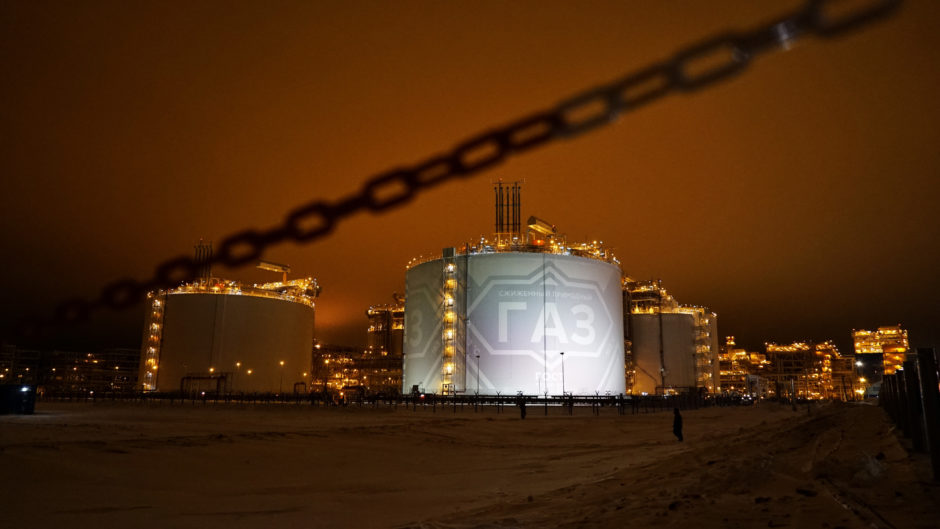June 19, 2019
The young reindeer herder took a deep breath in the frigid Arctic air as he pondered an existential question: Has the unprecedented push to unlock oil and gas wealth in Russia's Arctic helped or harmed his people?
"For humans, it's been good," said 19-year-old Maxime Okotetto, whose last name means "many deer" in the Indigenous language of the Nenets, a nomadic ethnic group native to the region.
"But for the reindeer, it's bad."
Reindeer herding is the main livelihood of the 14,000 Nenets of Russia's Yamal Peninsula, a vast tundra that protrudes into the Arctic Ocean some 2,500 kilometres northeast of Moscow.

The Nenets have followed the annual reindeer migration across the region for thousands of years.
With the ground frozen solid for up to eight months of the year, and wintertime lows of -50 C, it can be one of the most inhospitable places on Earth.
"We have less and less land — they took quite a big territory for the gas plant, and where there's gas [development], there's nothing [for the reindeer] to eat," said Okotetto.
The Nenets and the Sami are two Indigenous groups native to Russia's High Arctic whose lives have been disrupted by the recent development boom in the region.
Human activity quickly destroys the thin layer of moss and lichen that the reindeer graze on, he said.
The Nenets people lost grazing land not only to new construction projects but also to the vast new infrastructure network that comes with them — roads, pipelines and rail terminals that now cross the territory.
The Yamal plant Okotetto is referring to is one of the centrepieces of Russian President Vladimir Putin's ambition to unlock the riches of the country's polar region.
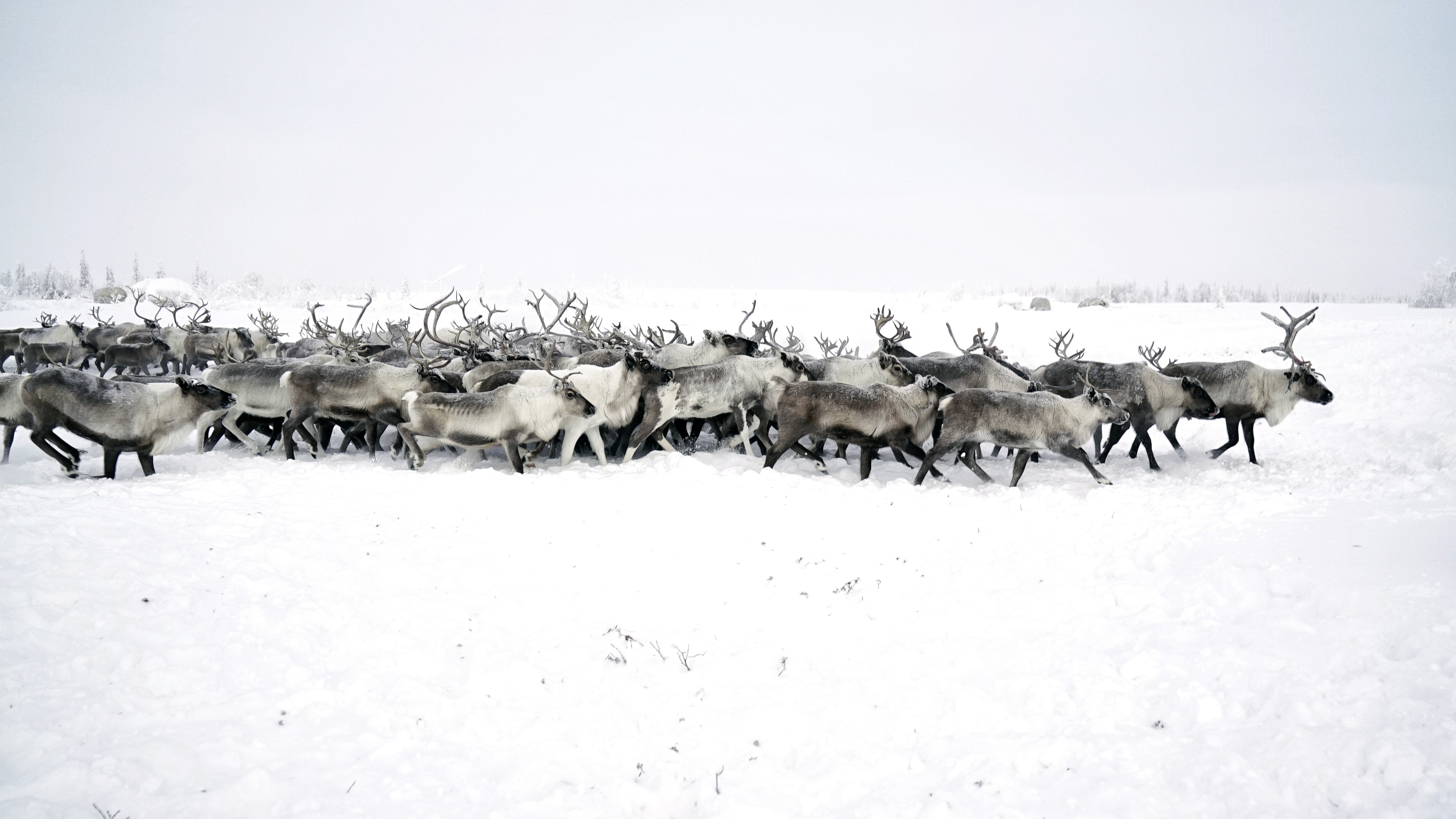
While Canada's government has banned hydrocarbon exploration on its side of the Arctic and declared climate change a national emergency, such considerations are utterly absent in Russia.
Instead, the emphasis is on getting as many riches out of the thawing permafrost as quickly as possible and capitalizing on the melting sea ice to move them all to Asian markets.
In all, the Kremlin says it's eyeing a staggering $80 billion US worth of new infrastructure and oil and gas development above the Arctic Circle over the next five years and $180 billion US in total over the next three decades.

"Russia has 74 trillion cubic metres of natural gas in the Arctic, and there are also many unexplored deposits," said Russian Energy Minister Alexander Novak.
The Arctic also contains vast deposits of oil, up to 48 billion barrels on Russia's side of the polar region alone.
More than two-thirds of the natural gas that's produced in Russia's north is expected to be exported to Asia-Pacific nations.
Yamal LNG is a $27-billion US liquefied natural gas venture between Russian, French and Chinese firms that's transforming this corner of Siberia. Opened in 2017, the plant is already shipping more than 16 million tonnes of gas to market every year.
Novatek, Yamal LNG's Russian operator, built an entirely new seaport at nearby Sabetta. There's also a work camp — really, a small city — that's large enough to accommodate thousands of workers.
And much more development is coming.
Novatek has started construction on a second, even larger facility nearby, and a third LNG project is in the planning stages.

Some 400 kilometres to the south, Salekhard, which services the growing LNG operations, has quickly become one of the most prosperous communities in Russia.
The former Arctic outpost, which 70 years ago was part of Stalin's notorious gulag penal system, has transformed in the last decade into a modern commercial and residential hub with a population of 45,000 people. It's filled with new apartment buildings with bright-coloured roofs, shopping malls and restaurants.
Salekhard's per capita income — the equivalent of about $1,400 Cdn a month — is now even higher than that of Russia's capital city, Moscow.
In winter, the community serves as a regional service centre that's connected to other outposts by a series of ice highways.
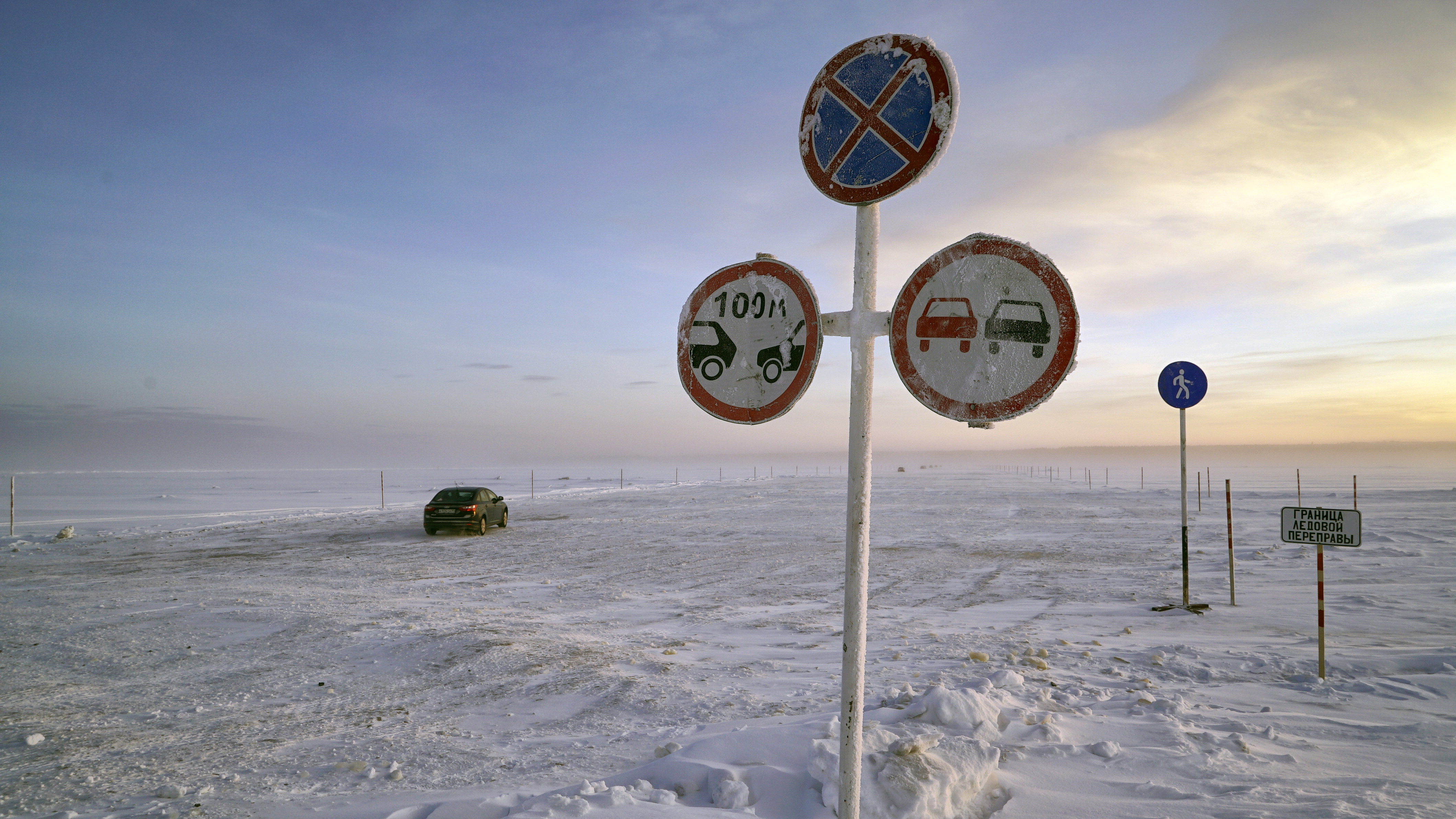
Along with the new industrial development, Russia is also aiming to control the shipping lanes in the Arctic — and for that, icebreakers are key.
Russia has already started construction on what it claims will be the world's largest fleet of nuclear-powered icebreakers, eventually expected to number between 10 and 13 vessels.
The newest icebreaker is the Ural, a beast of a ship that will be able to crunch through sea ice more than three metres thick.
Eight storeys high and 183 metres long, the Ural is powered by two nuclear reactors that won't need to be refuelled for almost seven years, giving the ship almost unlimited endurance.
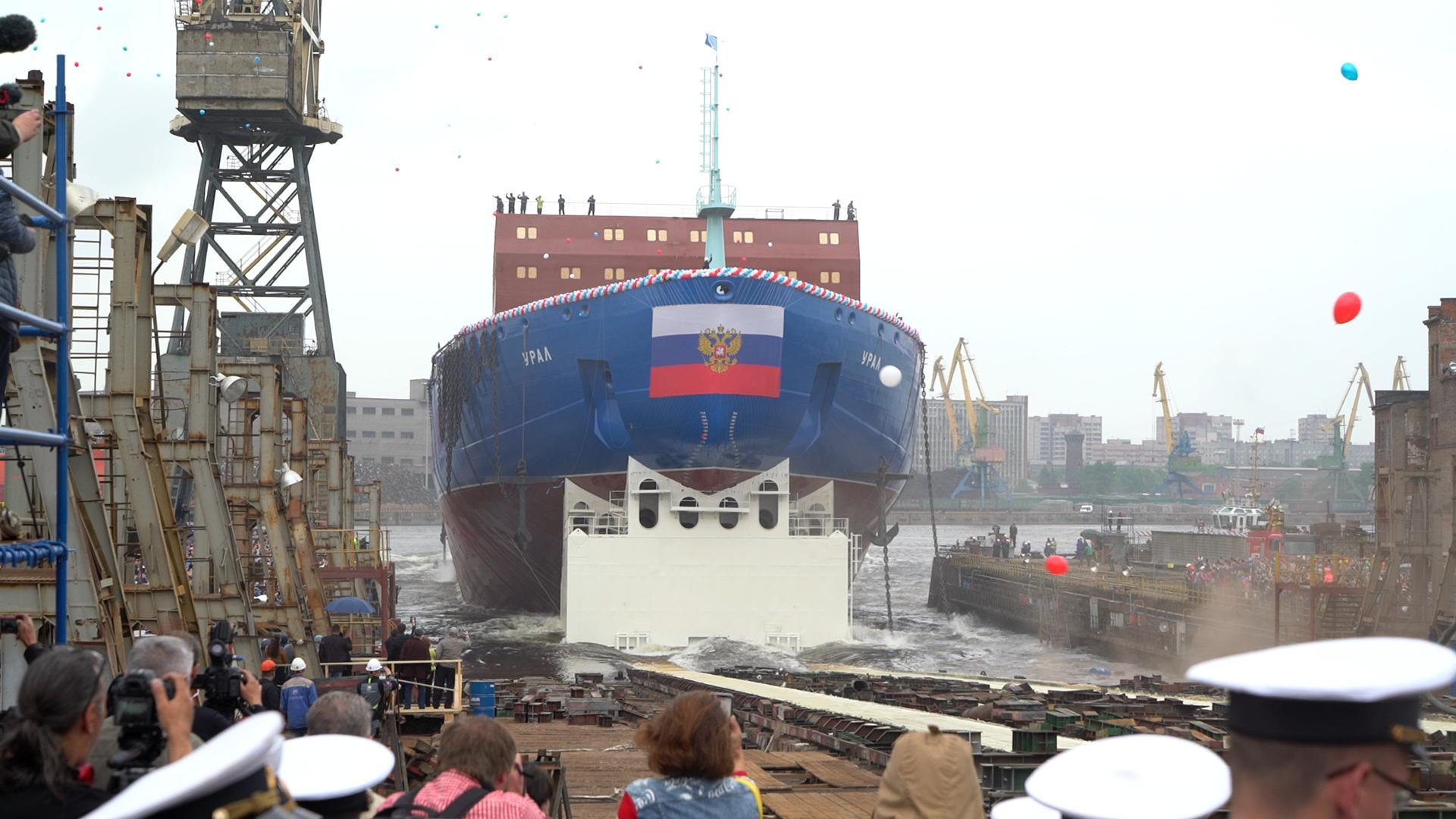

It was launched in late May in St. Petersburg in front of a cheering crowd.
Hundreds of residents came out to celebrate, including 74-year-old Victor Pavlovsky.
"Right now, I feel only happiness and gladness [to see this]," he told CBC News.
A longtime employee of the Baltic Shipyard, which won the contract to build the Ural and two other vessels, Pavolvsky says it's essential for Russia to maintain a strong presence in the far north.
The Ural is just the latest addition to Russia's fleet of powerful icebreakers, which it plans to keep expanding as part of its multibillion-dollar plan to expand oil and gas development in the Arctic.
"In all our history, starting from Peter the Great, Russia has constructed its fleet," he said. "Although ... the United States, Canada and other countries [also] explore this region. But we always were the first, and we need to keep up with them.
"Now, our aim is to build as many icebreakers as possible for the Northern Sea route, to reduce the time of delivery to the Far East."
Russia's government has said it expects the amount of cargo carried through its Arctic waters to increase to 80 million tonnes in 2025, from 20 million tonnes in 2018.

The 23-day journey from Europe to the Far East over the top of Asia is now ice-free only a few weeks a year but has the potential to shave up to 11 days off the traditional southern route through the Suez Canal.
With ice melt accelerating, the expectation is the icebreaker fleet will be able to keep the Northern Sea passage operating year-round, perhaps as soon as within a decade.
The new ships are to be based in the port city of Murmansk. With more than 330,000 people, it is the largest city north of the Arctic Circle, although its population has been decreasing since the breakup of the Soviet Union in 1991.
A flurry of new economic projects might turn that decline around.
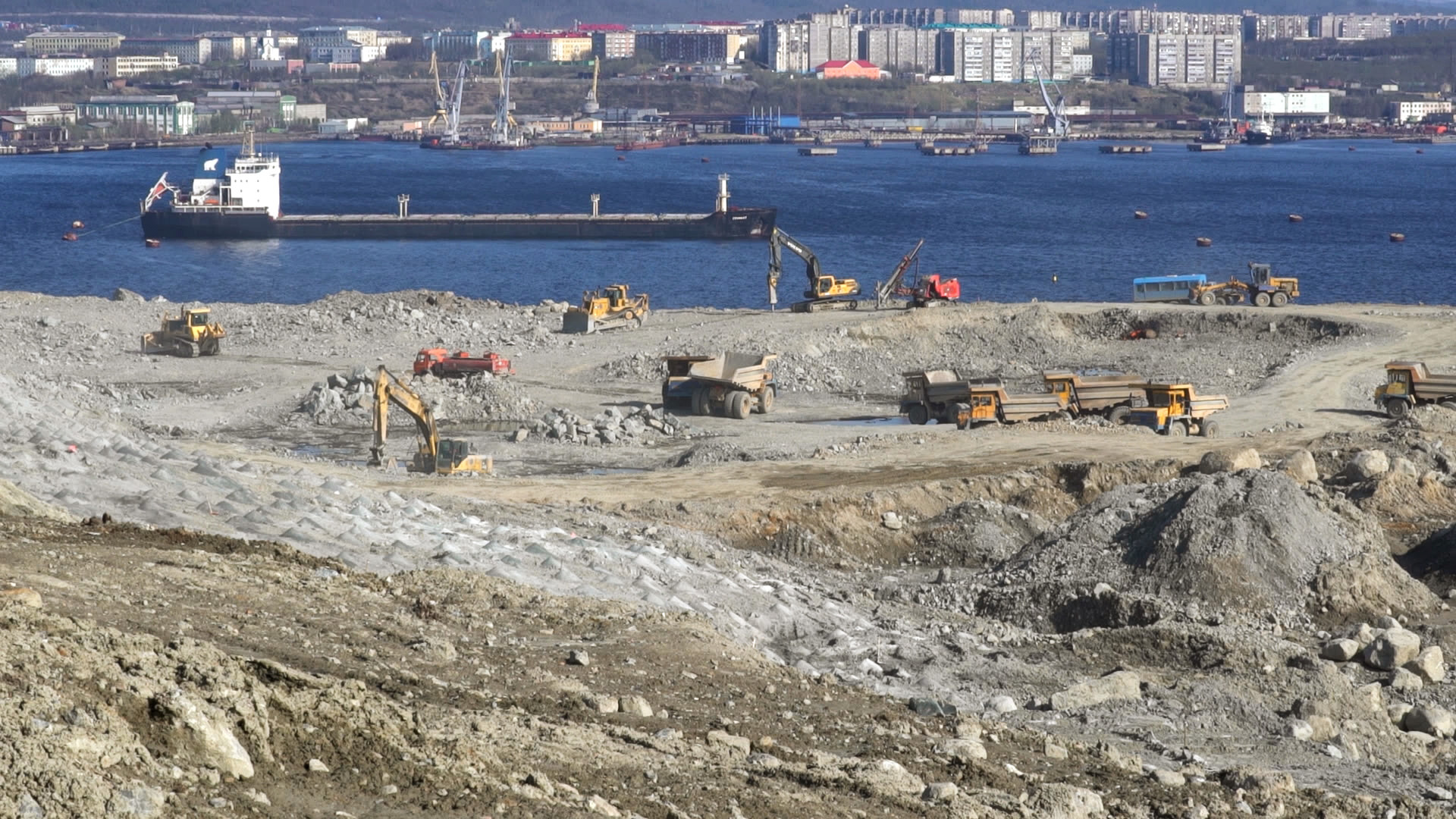
On the west side of the Kola Bay inlet, the city's flagship project is slowly taking shape.
The Murmansk Transportation Hub — a long dreamt of expansion and renewal of the city's aging port facilities — involves building a new 46-kilometre rail link and a coal terminal.
While the $750-million Cdn project has been hampered by financial issues and delays, the expectation is that coal exports will double to more than 25 million tonnes a year once it's complete. It was initially meant to be operational by the end of this year, but now it appears the first shipments from the port are still years away.
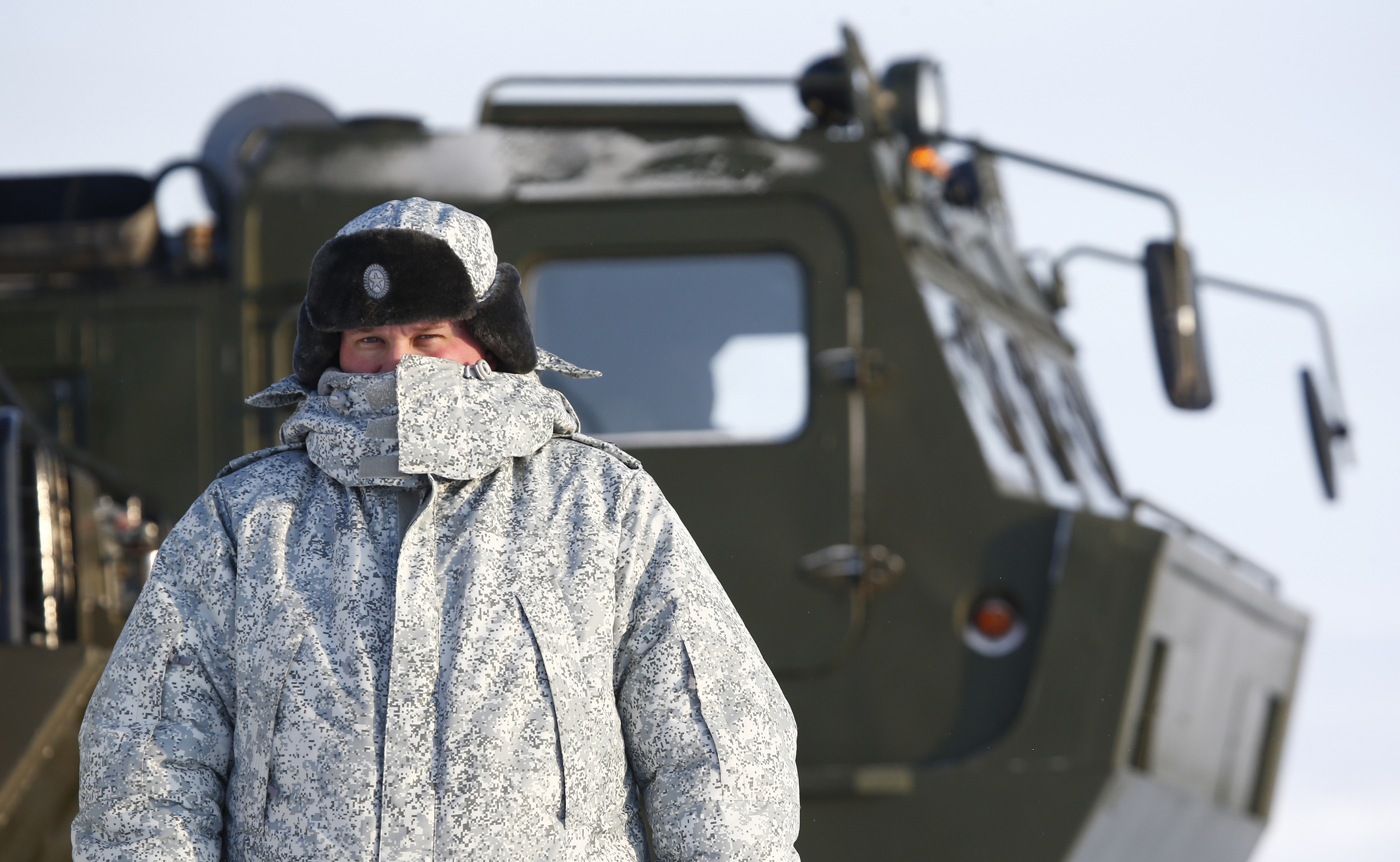
All the new economic activity in the Arctic has been accompanied by a military buildup, as well.
Across the north, Russia has recommissioned abandoned military bases and is building new ones to assert its sovereignty in the region.
The state news agency TASS reports that Russia has built 475 facilities in the Arctic in the past six years, including three new bases above the 75th parallel. It's unclear how large they are, but some of the new bases have been built to house several hundred service personnel.
On the 300-kilometre drive from Murmansk to the Norwegian border — just a tiny fraction of Russia's 24,000 kilometre Arctic coastline — the CBC crew counted five military facilities within sight of the highway.
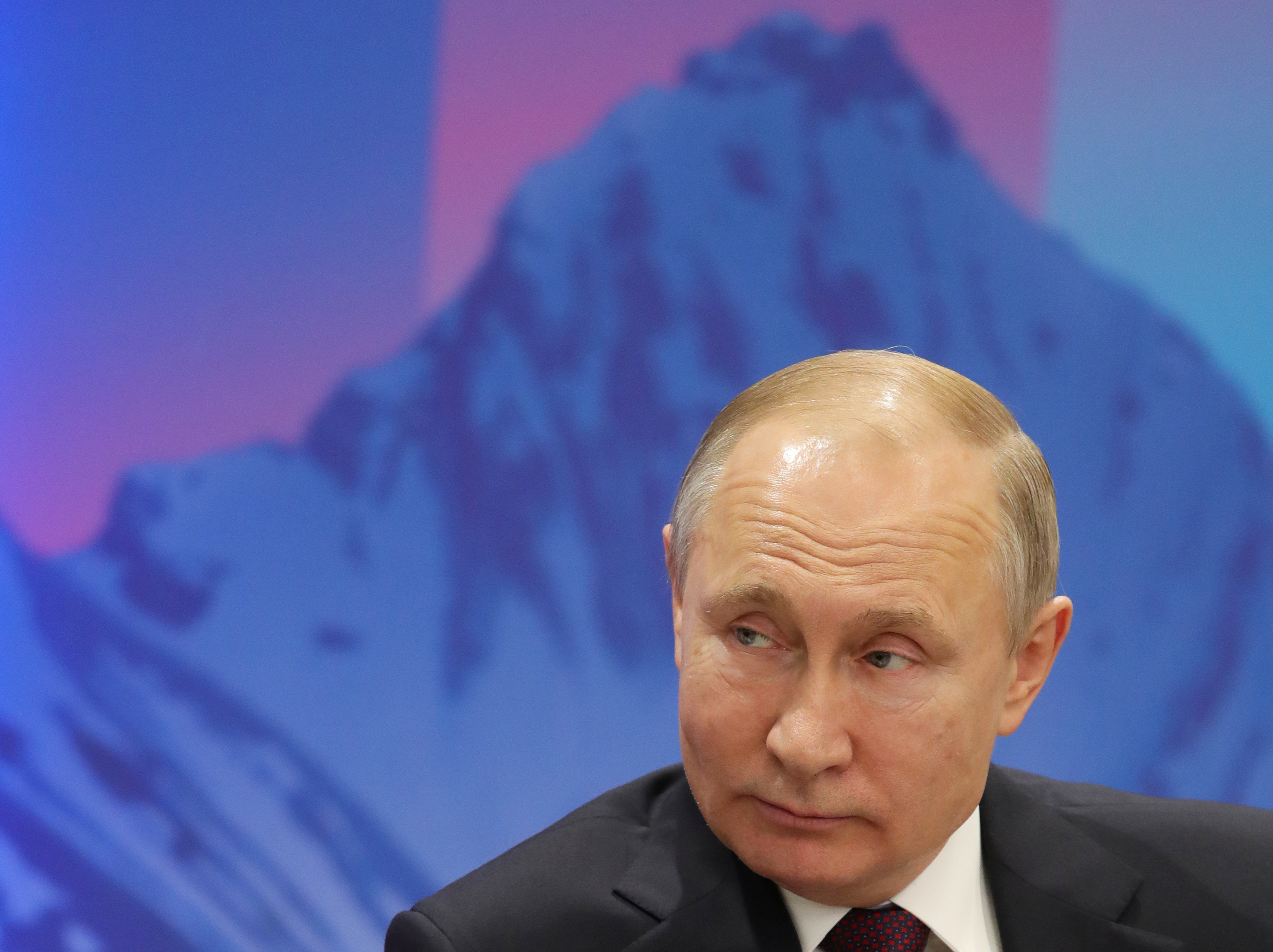
For the Putin government, faced with a sluggish economy and crippling foreign sanctions, the need to act fast in the Arctic is paramount.
"These resources are enormous. They have planetary significance," the Russian president told the Arctic Forum gathering in Saint Petersburg in April.
"Yes, there are sanctions, and they are restrictive, but they cannot stop us from exploring the Arctic."
But skeptics, including environmentalists, worry it's all happening too fast and with too little regard for the fragile ecosystem.

"I think, unfortunately, the world is going to need oil and gas for decades, so all the countries that have it will develop it — even in the Arctic," said Anna Kireeva, 40, an environmental journalist for the Bellona Foundation, a Norway-based NGO that has an office in Murmansk.
Kireeva is based at the foundation's office in Murmansk, where she was born. She helped the city deal with one of the worst environmental disasters of the post-Soviet age — the decommissioning of derelict former Soviet navy ships and the cleanup of the spent nuclear fuel in their reactors.
"I've seen how bad we can do. I still haven't seen how we can improve it."
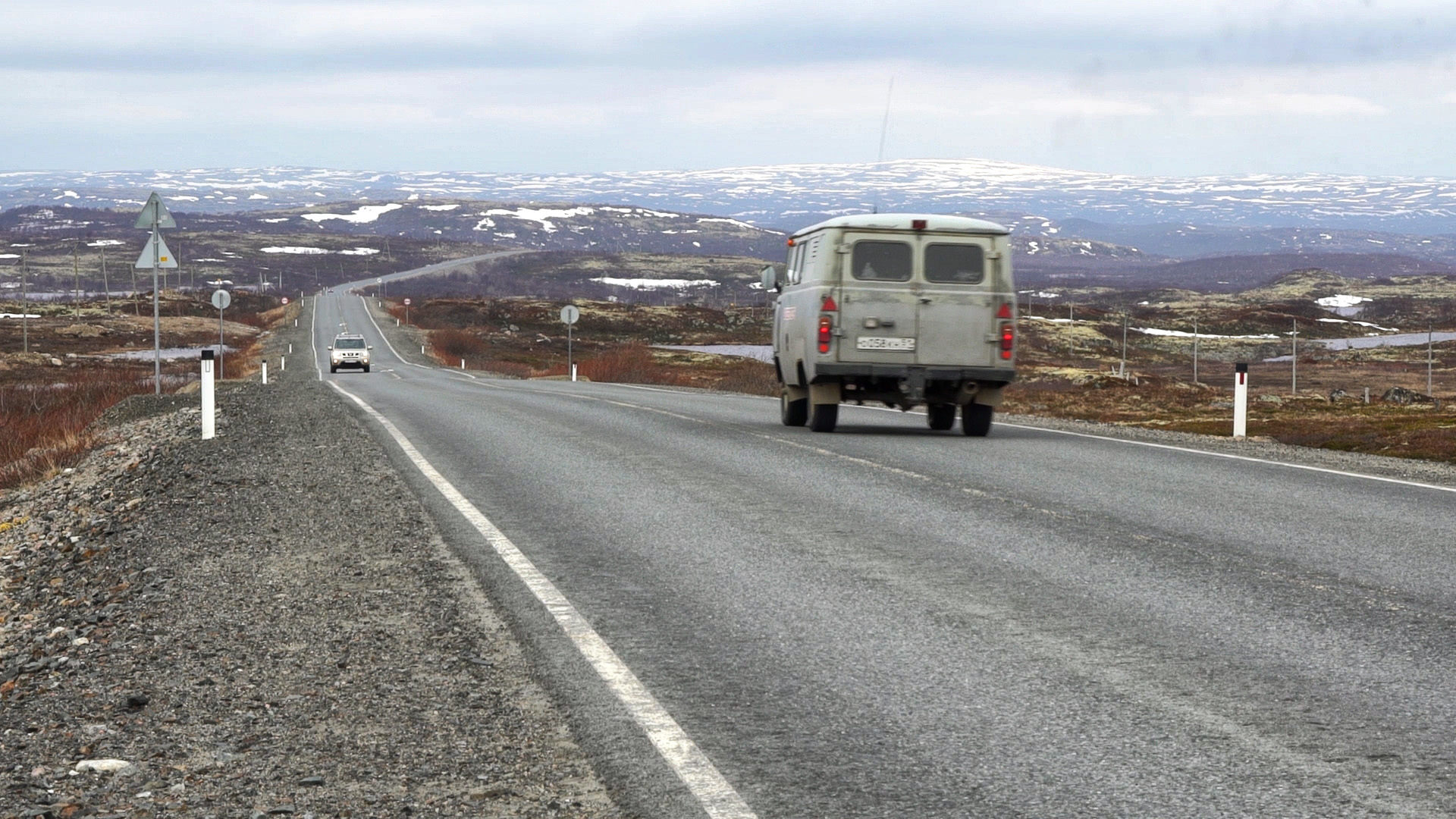
She took the CBC News team on a two-hour drive across the tundra to the community of Nikel.
A minerals smelter operated by Norilsk Nickel has been belching out emissions of sulphur dioxide for close to 70 years, leaving the fragile Arctic landscape blackened.

Norilsk had promised to clean up its operation for decades, but only recently have residents started to notice a difference, said Kireeva. She says the company has removed outdated smelting furnaces, leaving her cautiously optimistic that the worst of the pollution is over. Nonetheless, the moonscape that now surrounds the community will take years to recover, if it ever does.
Speaking in April, Putin vowed that his government wouldn't sacrifice the environment at the expense of industrialization in the Arctic. The goal, he said, is to "ensure harmony between economic development and preserving a unique and fragile bio-system."

Kireeva says people in Murmansk have heard a lot of such talk over the decades.
"Our president says that the Arctic should be developed with the highest environmental standards ... but unfortunately, in Russia, we don't have high environmental standards.
"I've been working with Bellona for 18 years, and we are dealing only with heritage from the past — problems that never would have been created if we thought about environmental consequences.

The Indigenous people of the Kola Peninsula, which includes Murmansk, have experienced many upheavals as a result of Arctic development over the decades.
Valentina Sovkina, a member of Russia's Sami nation, says during the Cold War, her relatives were uprooted from their homes to make way for Soviet submarine bases along the northern coast.
And today, she says, mining companies are constantly looking to develop projects along reindeer migration routes with little meaningful consultation.
"All these [projects] are so gigantic that we look like a small piece of sand in this world and, in fact, no one cares about our future."
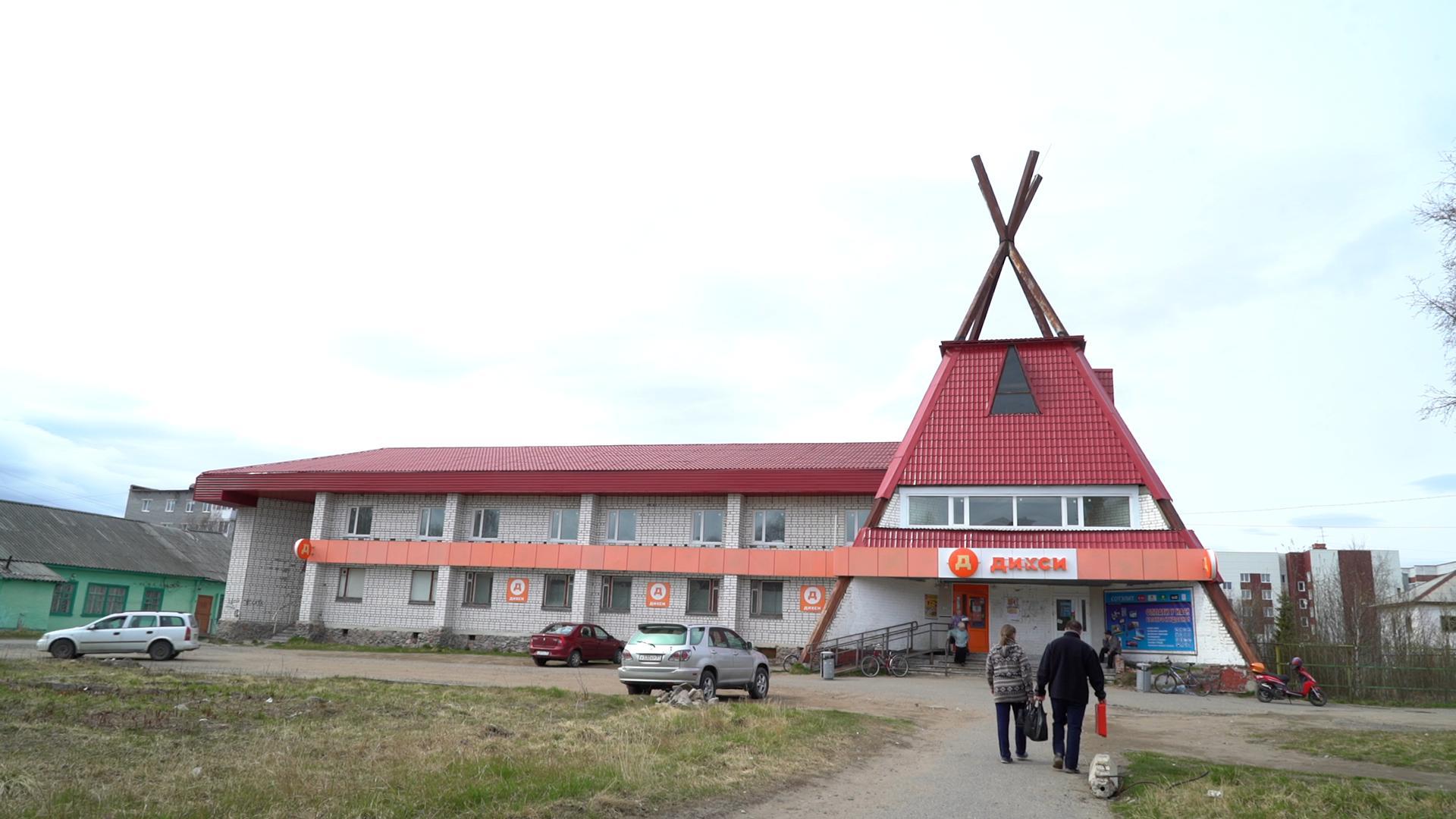
She says the Sami have, for more than a decade, fought the development of a nearby offshore gas field that could bring major industrialization to delicate herding areas.
The so-called Shtokman project appeared set to go ahead until 2012, when changing market conditions led some of its partners to pull out, although there is speculation Russia's energy giants might be preparing to jump back in.
"Every time we hear that the project will start again ... we think about it with a shudder," she said.
"It would be great if no one would touch the Arctic. [It] doesn't need digging, because the [eco]system is so fragile, and we cannot predict what may happen if people will pay a lot of attention to Arctic."

There's much that could go wrong with Russia's big Arctic bet. Energy prices could crash, and alternative fuels could gain traction.
But Russia's government is striving to be the world's top power in the Arctic, and it's aiming all of its financial, economic and political resources on achieving that.
